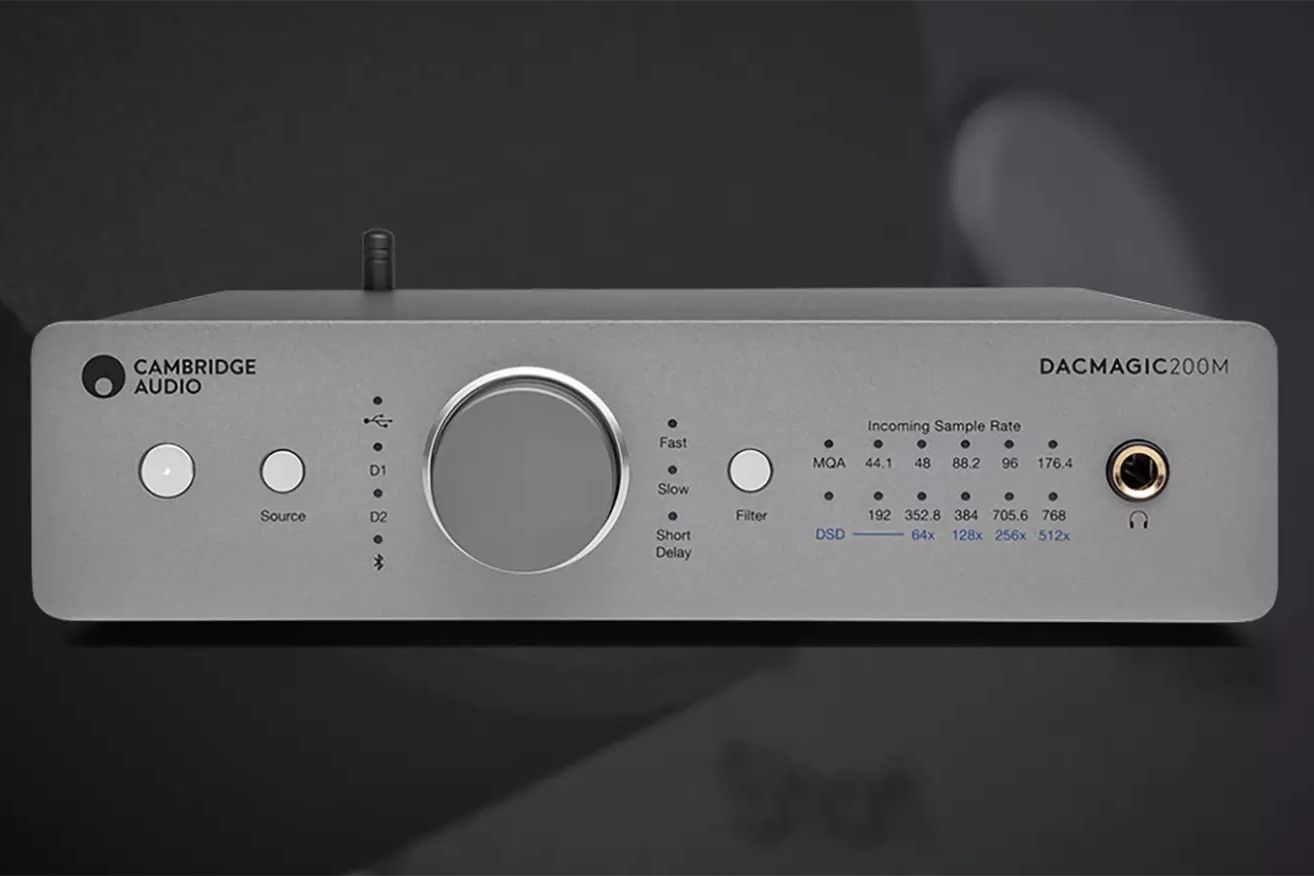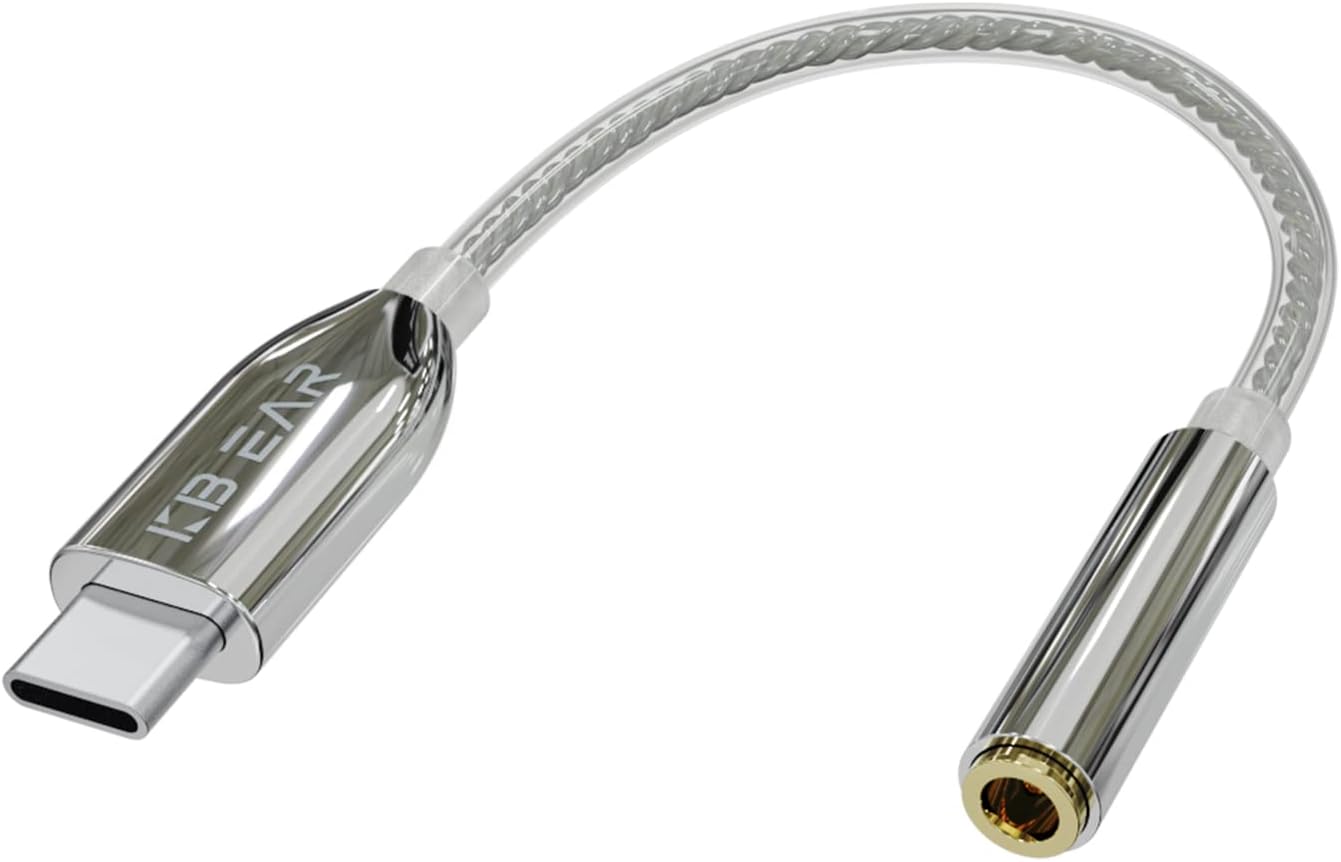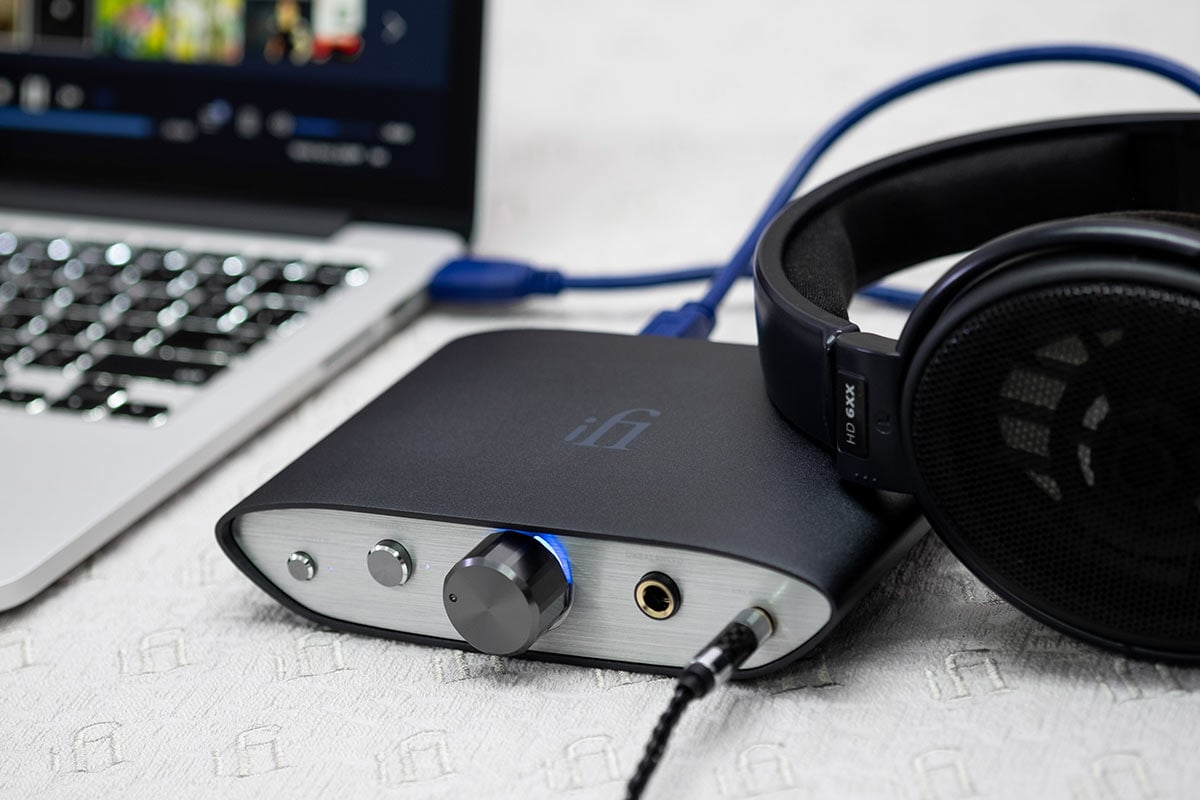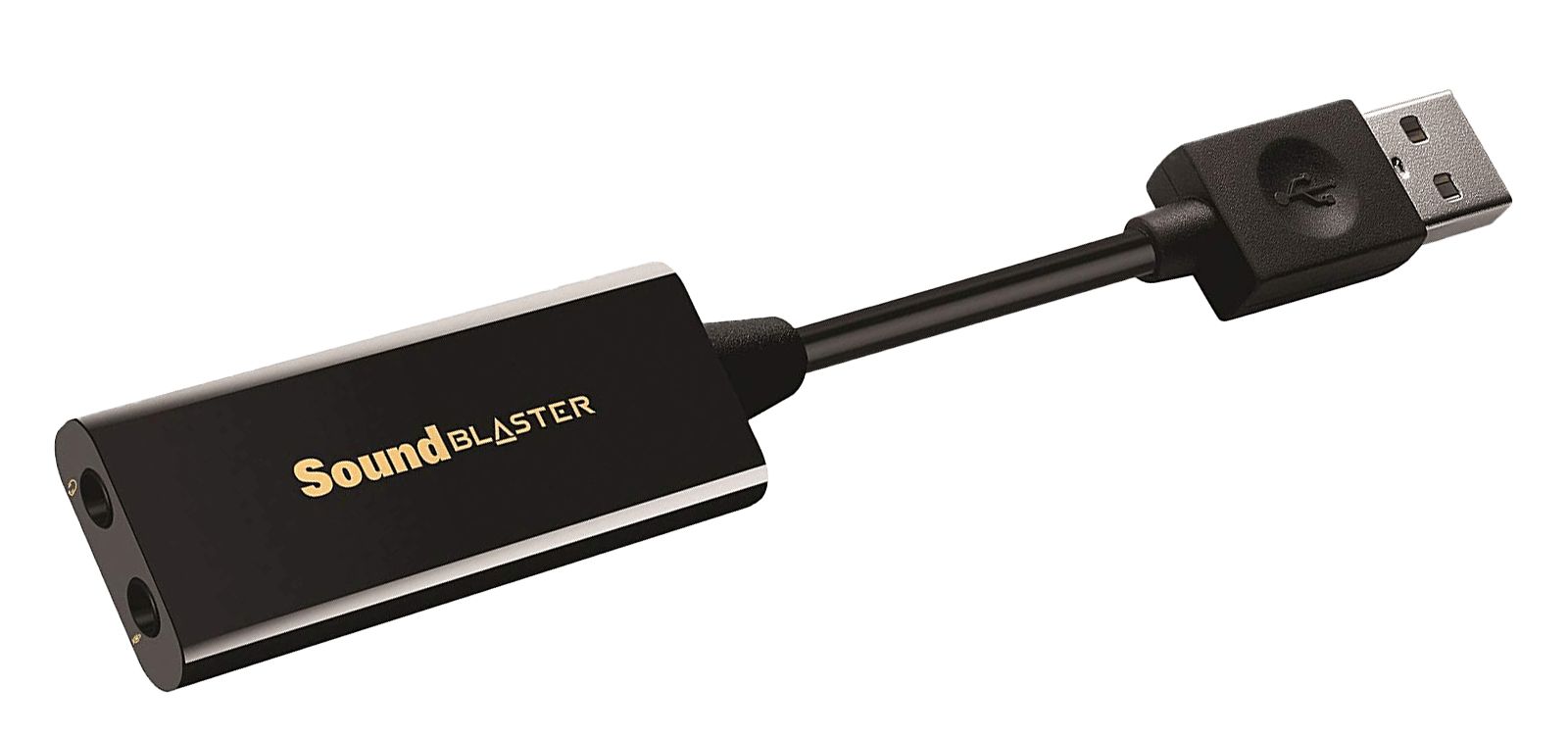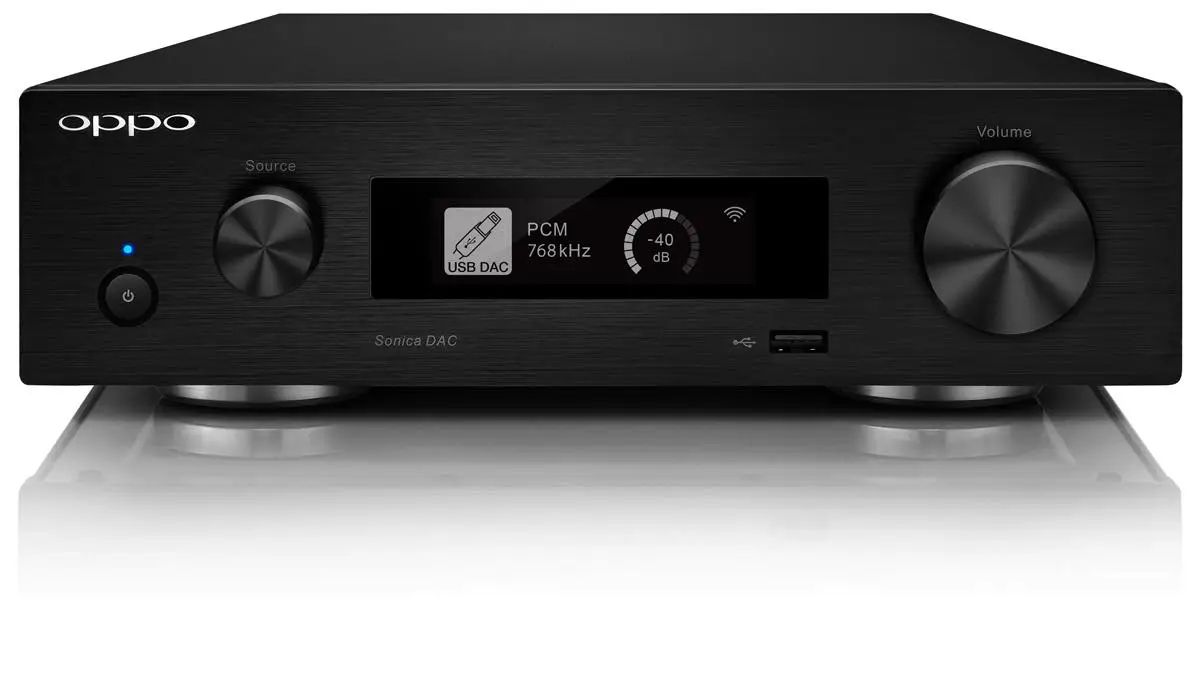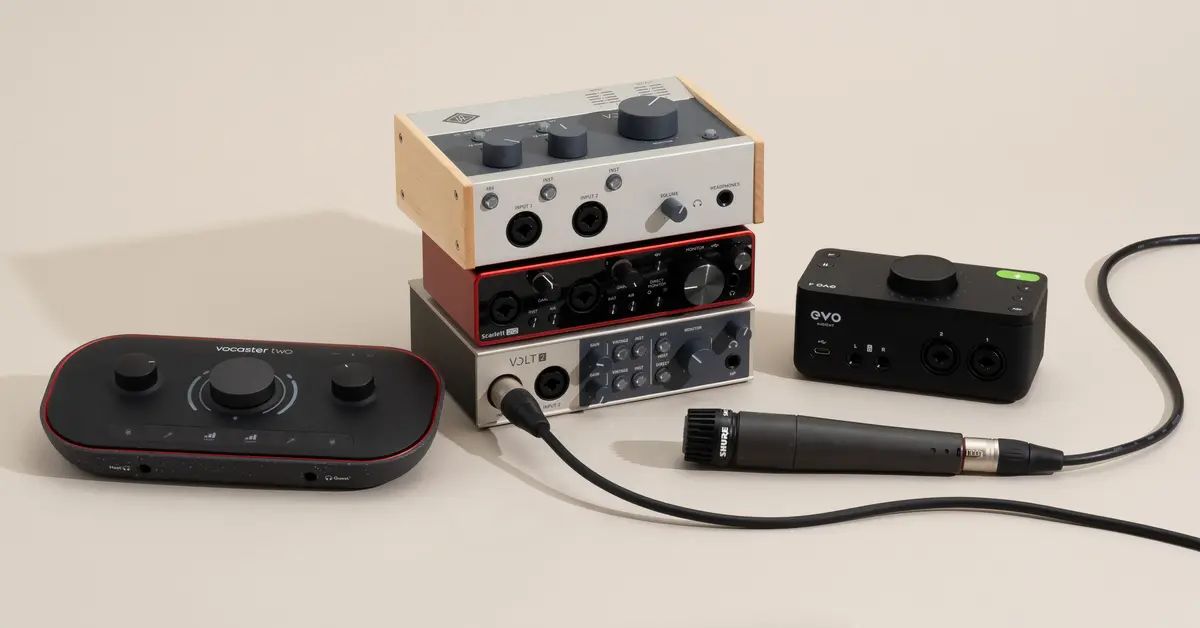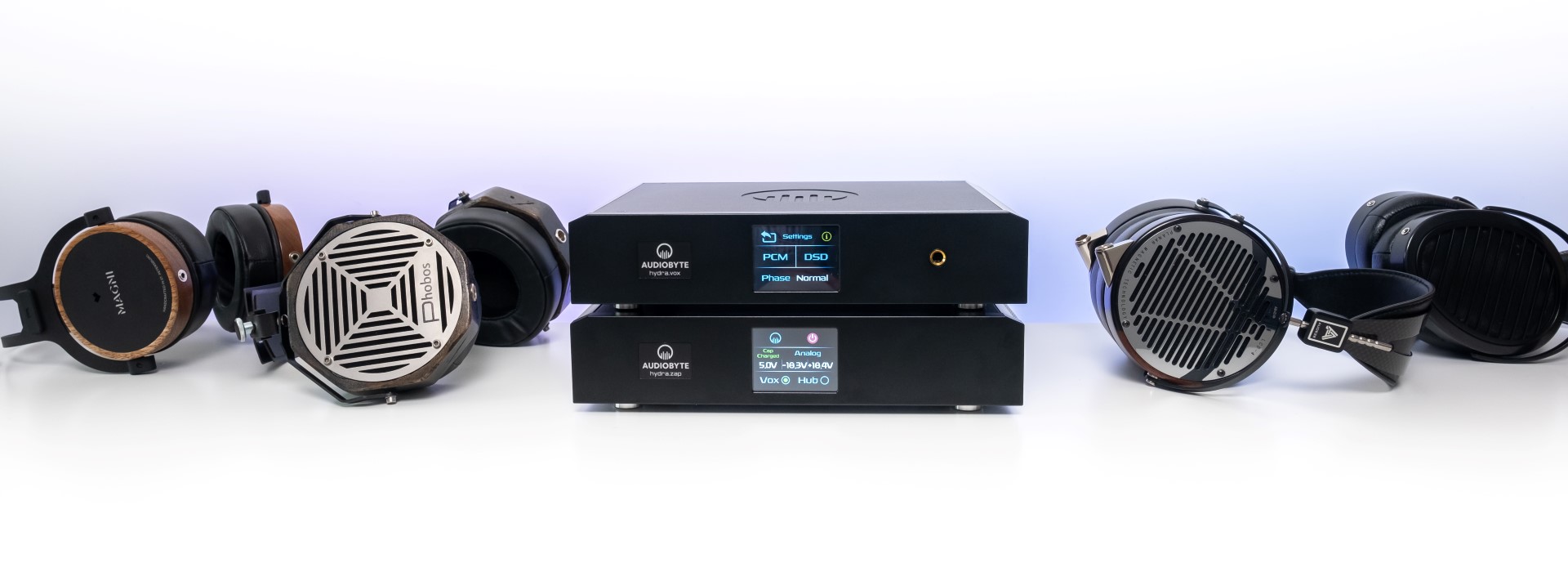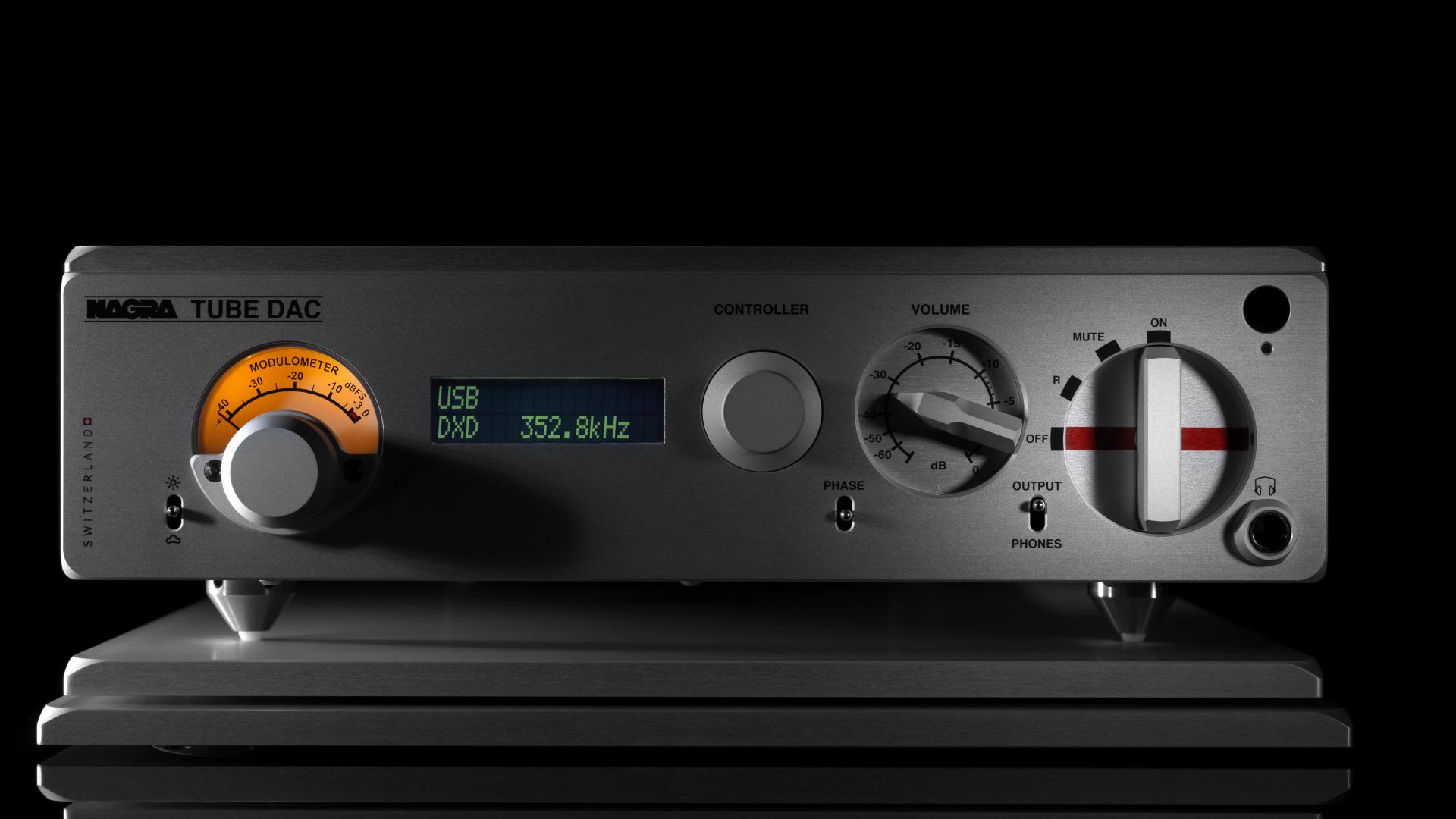Introduction
In today's digital age, the world of electronics is constantly evolving, offering an array of audio devices that deliver exceptional sound quality. At the heart of this audio marvel lies a critical component known as the Digital-to-Analog Converter (DAC). Understanding the role of DACs in electronics is pivotal for anyone seeking to delve into the realm of high-fidelity sound reproduction and digital audio processing.
The rapid advancement of technology has revolutionized the way we consume and experience audio. From music enthusiasts to audiophiles, the demand for superior sound quality has intensified, prompting a deeper exploration into the intricate workings of electronic devices. At the core of this pursuit lies the DAC, a fundamental element that plays a pivotal role in the conversion of digital audio signals into analog sound waves.
As we embark on this journey to unravel the significance of DACs in electronics, it becomes evident that these ingenious components are not merely confined to the realm of audio equipment. Instead, they permeate various facets of modern technology, including smartphones, laptops, home entertainment systems, and professional audio equipment. The pervasive nature of DACs underscores their indispensable role in shaping our auditory experiences across diverse electronic devices.
The ubiquity of digital audio content underscores the critical role of DACs in ensuring faithful reproduction of sound. Whether it's the melodic tunes of a symphony orchestra or the immersive sound effects of a blockbuster movie, the performance of a DAC profoundly influences the audio fidelity and overall listening experience. Thus, gaining a comprehensive understanding of DACs is pivotal for anyone seeking to harness the full potential of their electronic devices and elevate their audio encounters to new heights.
As we delve deeper into the realm of DACs, we will unravel their diverse types, explore their impact on audio quality, and shed light on the essential factors to consider when selecting a DAC. By embarking on this exploration, we will gain valuable insights into the pivotal role of DACs in the realm of electronics, paving the way for a heightened appreciation of the intricate interplay between digital technology and the art of sound reproduction.
What is a DAC?
At its core, a Digital-to-Analog Converter (DAC) serves as a transformative agent, converting digital audio signals into analog sound waves. In the digital realm, audio data is represented in a series of binary numbers, which are inherently incompatible with the natural analog nature of sound. This is where the DAC steps in, orchestrating the intricate process of translating these digital signals into a format that can be faithfully rendered as audible sound.
In essence, a DAC acts as a bridge between the digital realm, where audio data is stored and processed in binary form, and the analog world, where sound is experienced as continuous waveforms. By executing this pivotal conversion, the DAC enables electronic devices to produce sound that resonates with the rich, organic quality characteristic of analog audio.
The fundamental operation of a DAC revolves around the principle of sampling and reconstruction. When a digital audio signal is received, the DAC utilizes a sampling mechanism to capture discrete points of the signal at regular intervals. Subsequently, it employs a reconstruction process to convert these discrete points into a continuous analog waveform, thereby faithfully reproducing the original audio signal.
The significance of DACs extends beyond the realm of audio playback devices, permeating diverse electronic devices such as smartphones, tablets, computers, and home entertainment systems. In the context of mobile devices, DACs play a critical role in transforming digital audio files into immersive soundscapes, enriching the auditory experience of users.
Furthermore, the performance of a DAC profoundly influences the fidelity and clarity of sound reproduction, thereby shaping the overall audio quality delivered by electronic devices. As such, the quality of the DAC employed in an electronic device significantly impacts the richness, detail, and accuracy of the audio output, ultimately defining the sonic character and immersive nature of the listening experience.
In summary, a DAC serves as the linchpin in the conversion of digital audio signals into analog sound waves, playing a pivotal role in shaping the auditory experiences across a myriad of electronic devices. Its ability to faithfully translate digital data into rich, organic sound underscores its indispensable role in the realm of electronics, elevating the art of sound reproduction to new heights.
The Importance of DACs in Electronics
The significance of Digital-to-Analog Converters (DACs) in the realm of electronics is paramount, transcending the confines of audio reproduction to permeate diverse facets of modern technology. At the heart of this importance lies the pivotal role of DACs in enabling electronic devices to deliver high-fidelity sound reproduction and seamless audio experiences.
In the context of audio playback devices, DACs play a fundamental role in translating digital audio signals into analog sound waves, thereby facilitating the faithful reproduction of music, speech, and sound effects. This transformative process is essential for preserving the richness and nuances of audio content, ensuring that listeners are immersed in a captivating sonic landscape characterized by clarity, detail, and depth.
Moreover, the pervasive nature of digital audio content underscores the critical role of DACs in ensuring that the inherent quality of audio files is faithfully preserved during the conversion process. Whether it's the soul-stirring melodies of a symphony orchestra or the intricate nuances of a vocal performance, the performance of a DAC profoundly impacts the fidelity and authenticity of sound reproduction, thereby enriching the auditory experiences of listeners.
Beyond the realm of audio playback, DACs play a pivotal role in shaping the audio capabilities of smartphones, tablets, and laptops, elevating the sonic potential of these devices. By integrating high-performance DACs, electronic devices can deliver immersive soundscapes, enabling users to savor the intricacies of their favorite music, movies, and games with unparalleled clarity and realism.
Furthermore, the importance of DACs extends to professional audio equipment, where precision and accuracy are paramount. In recording studios, concert venues, and broadcast facilities, DACs serve as critical components in the signal chain, ensuring that audio signals are faithfully converted and reproduced with uncompromising fidelity and precision.
In essence, the importance of DACs in electronics lies in their ability to bridge the digital-analog divide, enabling electronic devices to faithfully reproduce sound with richness, depth, and authenticity. By harnessing the transformative power of DACs, modern technology has ushered in an era of unparalleled audio fidelity, enriching the auditory experiences of users across a myriad of electronic devices.
Types of DACs
The realm of Digital-to-Analog Converters (DACs) encompasses a diverse array of technologies, each offering unique capabilities and applications. Understanding the different types of DACs is pivotal for gaining insights into their varied functionalities and their role in shaping the audio landscape across electronic devices.
1. Binary-Weighted DAC:
This type of DAC employs a network of resistors with binary-weighted values to convert digital signals into analog outputs. The binary-weighted DAC architecture utilizes a parallel input, where each bit of the digital signal is associated with a specific resistor, enabling precise voltage division and accurate analog output. While binary-weighted DACs offer high-speed operation and straightforward implementation, they are susceptible to resistor matching issues, which can impact their linearity and accuracy.
2. R-2R Ladder DAC:
The R-2R ladder DAC is characterized by a resistor network comprising two distinct resistor values, R and 2R, arranged in a ladder-like configuration. This architecture enables the conversion of digital inputs into analog outputs through a series of weighted voltage summation. R-2R ladder DACs are renowned for their inherent linearity, low glitch energy, and robustness against resistor matching errors, making them suitable for high-precision audio applications.
3. Sigma-Delta DAC:
Sigma-Delta DACs leverage oversampling and noise-shaping techniques to achieve high-resolution conversion of digital signals into analog outputs. By oversampling the input signal at a significantly higher rate than the Nyquist frequency, Sigma-Delta DACs can effectively suppress quantization noise, resulting in exceptional signal-to-noise ratio and dynamic range. These DACs are widely employed in high-fidelity audio systems, where precise and artifact-free analog reproduction is paramount.
4. Current Steering DAC:
Current steering DACs, also known as current-switching DACs, operate by steering current through a network of switches to generate analog outputs. This architecture facilitates high-speed operation and offers excellent dynamic performance, making it suitable for applications demanding rapid signal processing and high-frequency operation. Current steering DACs are prevalent in communication systems, software-defined radios, and instrumentation equipment, where rapid and precise analog signal generation is essential.
5. Time-Interleaved DAC:
Time-interleaved DACs harness the principle of interleaving multiple lower-speed DAC channels to achieve higher overall conversion rates. By parallelizing the conversion process across multiple channels, time-interleaved DACs can deliver enhanced speed and performance, making them well-suited for applications requiring high-speed data conversion, such as broadband communication systems and digital transceivers.
In summary, the diverse landscape of DACs encompasses a spectrum of architectures and technologies, each tailored to specific applications and performance requirements. By exploring the distinct characteristics and functionalities of various DAC types, we gain valuable insights into their role in shaping the audio capabilities of electronic devices and driving the evolution of high-fidelity sound reproduction.
How DACs Impact Audio Quality
The impact of Digital-to-Analog Converters (DACs) on audio quality is profound, serving as a critical determinant of the fidelity, clarity, and richness of sound reproduction across electronic devices. At the core of this impact lies the pivotal role of DACs in translating digital audio signals into analog sound waves, thereby shaping the sonic character and immersive nature of the listening experience.
The performance of a DAC significantly influences the accuracy and precision with which digital audio signals are converted into analog outputs. This transformative process is pivotal for preserving the nuances, dynamics, and spatial characteristics of audio content, ensuring that listeners are immersed in a captivating sonic landscape characterized by depth and realism. As such, the inherent quality of a DAC profoundly impacts the faithful reproduction of music, speech, and sound effects, enriching the auditory experiences of users across a myriad of electronic devices.
Furthermore, the impact of DACs extends to the realm of signal integrity, where the ability of a DAC to faithfully reconstruct analog waveforms from digital inputs directly correlates with the preservation of audio fidelity. High-performance DACs exhibit superior linearity, low distortion, and minimal noise, thereby ensuring that the original qualities of the audio signal are faithfully retained during the conversion process. This translates into a sonic experience characterized by pristine clarity, exquisite detail, and immersive realism, elevating the audio quality delivered by electronic devices to new heights.
Moreover, the impact of DACs on audio quality encompasses the realm of dynamic range and signal-to-noise ratio, where the precision and resolution of a DAC play a pivotal role in faithfully capturing and reproducing the full spectrum of audio content. By delivering exceptional dynamic range and minimizing quantization noise, high-performance DACs enable the faithful preservation of subtle nuances, transient details, and tonal intricacies within audio recordings, thereby enriching the listening experience with a heightened sense of realism and authenticity.
In summary, the impact of DACs on audio quality is multifaceted, encompassing aspects of fidelity, signal integrity, dynamic range, and resolution. By harnessing the transformative power of DACs, electronic devices can deliver high-fidelity sound reproduction characterized by richness, clarity, and authenticity, thereby enriching the auditory experiences of users and elevating the art of sound reproduction to new heights.
Factors to Consider When Choosing a DAC
When embarking on the journey of selecting a Digital-to-Analog Converter (DAC) to enhance the audio capabilities of electronic devices, several critical factors warrant careful consideration. By meticulously evaluating these factors, individuals can make informed decisions that align with their audio preferences and performance expectations.
-
Audio Quality and Resolution: The foremost consideration when choosing a DAC revolves around its audio quality and resolution capabilities. High-quality DACs are characterized by superior signal-to-noise ratio, low distortion, and exceptional dynamic range, enabling them to faithfully reproduce the nuances and subtleties within audio content. Individuals seeking uncompromising audio fidelity should prioritize DACs with high-resolution capabilities, ensuring that the full spectrum of audio details is faithfully preserved during the conversion process.
-
Compatibility and Connectivity: The seamless integration of a DAC with existing audio devices and systems is paramount. Individuals should assess the compatibility of a DAC with their preferred audio sources, such as smartphones, computers, and home entertainment systems. Furthermore, considerations regarding connectivity options, including USB, optical, and coaxial interfaces, play a pivotal role in ensuring versatile and hassle-free integration with a diverse range of audio equipment.
-
Portability and Form Factor: For individuals seeking to augment the audio capabilities of mobile devices or laptops, the portability and form factor of a DAC assume significance. Compact, lightweight DACs with robust build quality and portable form factors offer convenience and versatility, enabling users to elevate their audio experiences while on the move.
-
Sampling Rate and Bit Depth: The sampling rate and bit depth capabilities of a DAC directly impact its ability to accurately reproduce audio content. High-performance DACs with support for high sampling rates and bit depths deliver enhanced resolution and precision, ensuring that audio content is faithfully rendered with exceptional clarity and detail.
-
Headphone Amplification: For audiophiles and music enthusiasts, the presence of a built-in headphone amplifier within a DAC holds substantial appeal. A potent headphone amplifier integrated into a DAC can drive high-impedance headphones with finesse, delivering immersive and dynamic soundscapes that elevate the listening experience to new heights.
-
Price and Value Proposition: While evaluating DAC options, individuals should assess the price-to-performance ratio and the overall value proposition offered by each device. By striking a balance between budget considerations and performance expectations, individuals can identify DACs that deliver exceptional audio quality and feature sets without compromising on affordability.
In essence, the selection of a DAC hinges on a comprehensive evaluation of factors such as audio quality, compatibility, portability, sampling capabilities, headphone amplification, and overall value proposition. By meticulously considering these factors, individuals can navigate the diverse landscape of DACs and identify the optimal solution that aligns with their audio preferences and technological requirements.
Conclusion
In conclusion, the realm of Digital-to-Analog Converters (DACs) stands as a testament to the profound interplay between digital technology and the art of sound reproduction. The pivotal role of DACs in electronics transcends mere audio conversion, permeating diverse facets of modern technology and shaping the auditory experiences of users across a myriad of electronic devices.
As we traverse the landscape of DACs, we unravel their transformative power in converting digital audio signals into rich, organic sound waves, thereby preserving the nuances and dynamics of audio content. The impact of DACs on audio quality emerges as a defining factor, influencing the fidelity, clarity, and richness of sound reproduction across smartphones, laptops, home entertainment systems, and professional audio equipment.
Moreover, the diverse types of DACs, ranging from binary-weighted and R-2R ladder architectures to sigma-delta and current steering designs, underscore the versatility and adaptability of these ingenious components. Each type of DAC offers unique capabilities tailored to specific applications, thereby enriching the audio capabilities of electronic devices and driving the evolution of high-fidelity sound reproduction.
The selection of a DAC necessitates a meticulous evaluation of critical factors such as audio quality, compatibility, portability, sampling capabilities, headphone amplification, and overall value proposition. By navigating these considerations, individuals can identify DACs that align with their audio preferences and performance expectations, thereby enhancing their auditory experiences with unparalleled clarity and realism.
In essence, the significance of DACs in electronics lies in their ability to bridge the digital-analog chasm, enabling electronic devices to faithfully reproduce sound with richness, depth, and authenticity. By harnessing the transformative power of DACs, modern technology has ushered in an era of unparalleled audio fidelity, enriching the auditory experiences of users and elevating the art of sound reproduction to new heights.







